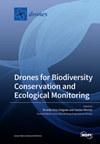Research on Data Link Channel Decoding Optimization Scheme for Drone Power Inspection Scenarios
IF 4.4
2区 地球科学
Q1 REMOTE SENSING
引用次数: 0
Abstract
With the rapid development of smart grids, the deployment number of transmission lines has significantly increased, posing significant challenges to the detection and maintenance of power facilities. Unmanned aerial vehicles (UAVs) have become a common means of power inspection. In the context of drone power inspection, drone clusters are used as relays for long-distance communication to expand the communication range and achieve data transmission between patrol drones and base stations. Most of the communication occurs in the air-to-air channel between UAVs, which requires high reliability of communication between drone relays. Therefore, the main focus of this paper is on decoding schemes for drone air-to-air channels. Given the limited computing resources and battery capacity of a drone, as well as the large amount of power data that needs to be transmitted between drone relays, this paper aims to design a high-accuracy and low-complexity decoder for LDPC long-code decoding. We propose a novel shared-parameter neural-network-normalized minimum sum decoding algorithm based on codebook quantization, applying deep learning to traditional LDPC decoding methods. In order to achieve high decoding performance while reducing complexity, this scheme utilizes codebook-based weight quantization and parameter sharing methods to improve the neural-network-normalized minimum sum (NNMS) decoding algorithm. Simulation experimental results show that the proposed method has a better BER performance and low computational complexity. Therefore, the LDPC decoding algorithm designed effectively meets the drone characteristics and the high channel decoding performance requirements. This ensures efficient and reliable data transmission on the data link between drone relays.无人机电源巡检场景下数据链路信道解码优化方案研究
随着智能电网的快速发展,输电线路的部署数量大幅增加,对电力设施的检测和维护提出了重大挑战。无人驾驶飞行器(uav)已成为电力检测的常用手段。在无人机供电巡检的背景下,利用无人机集群作为中继进行远程通信,扩大通信范围,实现巡逻无人机与基站之间的数据传输。大部分通信发生在无人机之间的空对空信道,这就要求无人机中继之间的通信具有较高的可靠性。因此,本文主要研究无人机空对空信道的解码方案。鉴于无人机的计算资源和电池容量有限,以及无人机中继之间需要传输大量功率数据,本文旨在设计一种高精度、低复杂度的LDPC长码译码解码器。提出了一种基于码本量化的共享参数神经网络归一化最小和译码算法,将深度学习应用于传统LDPC译码方法。为了在降低复杂度的同时获得较高的译码性能,该方案利用基于码本的权值量化和参数共享方法对神经网络归一化最小和(NNMS)译码算法进行改进。仿真实验结果表明,该方法具有较好的误码率性能和较低的计算复杂度。因此,所设计的LDPC解码算法有效地满足了无人机的特性和高信道解码性能的要求。这确保了无人机中继之间的数据链路上高效可靠的数据传输。
本文章由计算机程序翻译,如有差异,请以英文原文为准。
求助全文
约1分钟内获得全文
求助全文

 求助内容:
求助内容: 应助结果提醒方式:
应助结果提醒方式:


